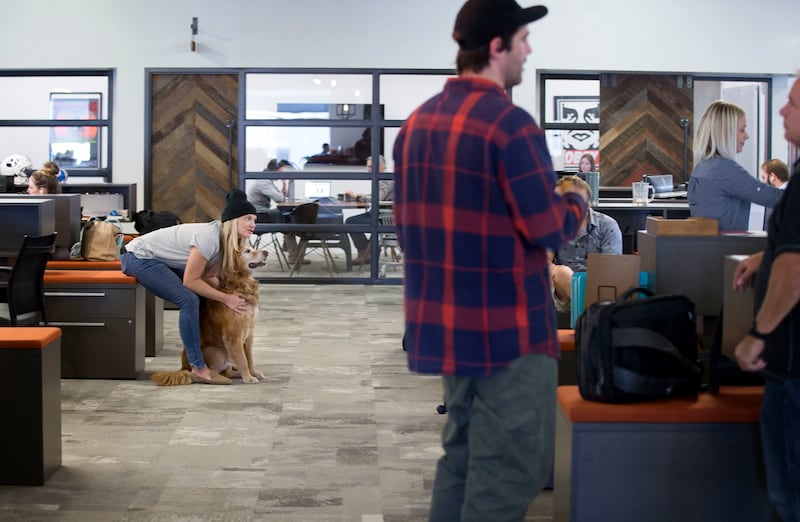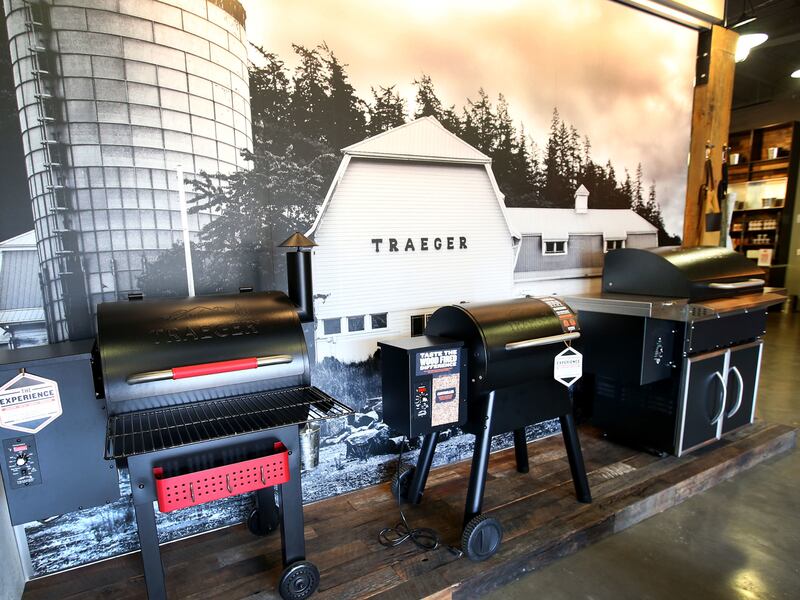SALT LAKE CITY — To the casual observer, it may be hard to see how headphones for hipsters have anything in common with high-end, wood-fired grills, but serial entrepreneur Jeremy Andrus not only sees them as closely akin, he's making a habit of turning one-time niche consumer products into moneymaking juggernauts.
And the key, he says, whether it's a Skullcandy headphone or Traeger grill, is addressing customers' desires before they realize what they've been missing.
"When you look at Skullcandy and Traeger, other than the fact that they’re different products, the analogs are there," Andrus said. "Understanding who your consumer is and how you create innovative solutions that address their needs.
"That is the art in a consumer product business, because a consumer never tells you what their problem is. They don’t know what’s possible."
Expanding possibilities may be one way to describe what Andrus, a BYU grad who also earned an MBA at Harvard Business School, brings to companies he becomes involved with.
In 2005, Andrus joined Park City-based Skullcandy, a business launched in 2003 by Rick Alden, and helped grow the company from less than $1 million in annual revenues to almost $300 million in sales in 80 countries and, along the way, took the company public. But the business model and leadership responsibilities change dramatically when a company becomes a publicly traded entity and, for Andrus, that took some intrigue out of the challenge.
"There’s no question, when you’re the highest shorted stock on the NASDAQ and in an industry notorious for declining margins and Wall Street is beating you up, it does take some of the fun out of it," Andrus said. "When you're smaller and private, you obsess over product development and customer experience and growth, not quarterly reports."
After eight years with Skullcandy, ready for a change and looking to re-engage that pre-public, business-building vibe but without a new project to engage, Andrus joined Boston-area private equity firm Solamere Capital, a company with Utah ties through founders Tagg Romney, Eric Scheuermann and Spencer Zwick. But that would turn out to be a mere stepping stone to Traeger, a three-decade old company founded in Mt. Angel, Oregon, and grown by two generations of the Traeger family into a brand that, according to Andrus, had a little-recognized but highly passionate following.
"I was doing customer research and had a guy tell me, 'Traeger changed my life,'" Andrus said. "I looked up from my notes and asked him to say it again ... I'd never heard this about a consumer product and was not expecting to hear it about a backyard barbecue.
"This brand is an absolute gem, the fact that it was so small relative to its potential and had so much history, and second-generation ownership of people who loved it so much, showed me it was meaningful opportunity," he said.
Andrus and investment partner Trilantic North America acquired the company, moved its headquarters to a new building in Sugar House and Andrus took over the helm as CEO in 2014. Since that time, heavy investment in product innovation and a multi-channel marketing campaign has borne fruit, with annual revenues growing from $70 million at the time of acquisition to over $300 million today. That meteoric rise in revenues attracted the interest of larger investors, and earlier this year, the AEA group and Ontario Teachers Union Pension Plan acquired a majority interest in the company. One of the outcomes of the focused, and well-financed, effort has been the development of the Traeger Timberline grill, a smoker/indirect heat cooker that can be controlled and monitored via a smart phone app.
"We're not looking for simple improvements like better handles or a nicer paint job," Andrus said. "We're working to disrupt and innovate in an industry whose most recent benchmark was the advent of propane in the ’70s."
Andrus said thousands of hours have been spent working with and observing Traeger users. This data-gathering has helped identify how a product, which he said already functions at a very high level, can be evolved to "address problems consumers didn't even know they had."
For one Utah Traeger-convert, some initial qualms about entering the world of pellet grills was overcome after just one use.
"I was kind of a nonbeliever in smoking and barbecue because it just looked too hard," said Nate Quigley, co-founder of Utah tech company Chatbooks. "But, you just pour these pellets into this box and set the temperature and walk away. I became a believer when I just did it the first time."
Quigley started cooking on a Traeger grill for the staff at Chatbooks’ Provo headquarters and evolved his cooking role at home, thanks to the results he was getting.
“It’s been fun to get into, and I’m even part of Sunday meals at our house now,” Quigley said. “The Traeger thing for me is so easy and the result makes you the hero of the afternoon. The smoke and the way it distributes heat indirectly … makes everything taste great. I’ll never go back to a gas grill.”
Quigley’s experience with Traeger products is just the outcome Andrus’ and his team continue to work for and they’re using a wide variety of tools and approaches to build their customer base beyond the weekend barbecue warriors or, as they're known at Traeger, the “Kings of the cul-de-sac.”
While old-school grillers and outdoors types still represent the majority of customers who buy Traegers, Andrus said their fastest-growing demographic is the much-vaunted millennial generation who are now old enough to be investing in their own homes and the trappings that go with them. And they’re into cooking and food in a much different way than traditional customers.
“We think there is massive opportunity in what we call the culinary consumer segment,” Andrus said. “A lot of millennials are approaching food as an experience more than a function. They’re using our grills in new ways, cooking ingredients that go into a salad, smoking salts, smoking fruits for their cocktails.”
Chef Timothy Hollingsworth is also interested in doing business with millennial customers with high interest in cuisine and is utilizing Traeger grills in both of his popular Los Angeles restaurants, Otium and Barrel and Ashes.
“That’s sort of the demographic that we’re aiming for,” Hollingsworth said. “We are shooting for those young influential people who go out on a daily basis and have a high appreciation for food.”
Hollingsworth, who trained under celebrity chef Thomas Keller and eventually rose to the post of chef de cuisine at Keller’s famous Napa Valley restaurant French Laundry before launching his own efforts, said he chose Traegers for his restaurants because of their ease of use and controllable, consistent results. He’s even installed one at his home were he likes to keep things simple, but loves the “comforting and satisfying” results he gets from food cooked on the grill.
For Andrus, his comfort and satisfaction will come with continuing to disrupt the once-staid realm of grilling products, and he’s shooting for hitting $1 billion in annual revenues in the next five years. While the top-of-the-line Timberline, which sells for between $1,700-$2,000 depending on options, sold out its initial online inventory in 11 minutes, the technology it includes will be making it’s way down into other Traeger products, with average pricing near the $800 mark and grills starting around $300.
“We’re investing deeply in the future and the experience is going to get better and better,” Andrus said. “We’re building an iconic American brand that has global reach.”







